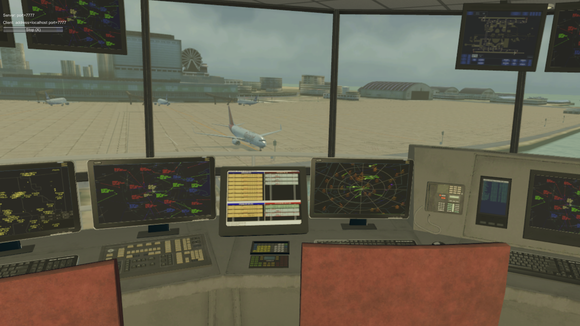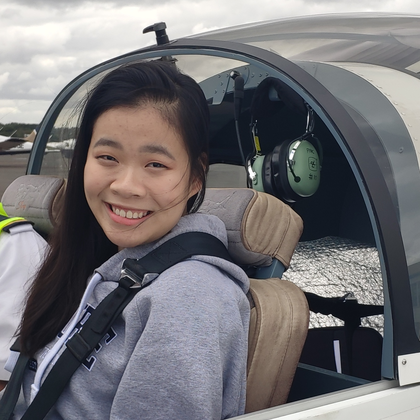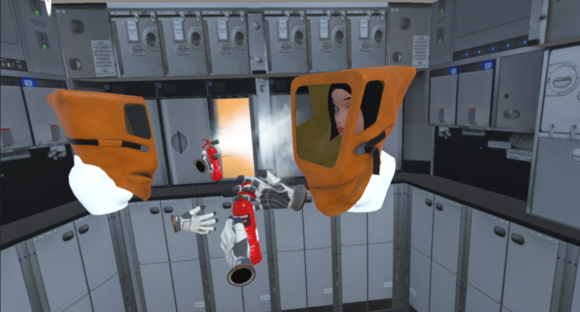Life at HKU SPACE Our Stories
VR technology provides important e-Learning resourcesEvent Recap
- Date
- 10 Dec 2020 (Thu)
VR replicates the physical world through digital methods, allowing us to experience the environment with an immersive 360-degree perspective. This advanced technology enhances students’ learning experiences and is an indispensable resource for e-Learning. It is especially important for aviation courses. In fact, the Airport Authority Hong Kong is currently using VR for operational exercises or training, such as the training of aviation procedures and teaching aviation safety procedures.
Aviation procedures are systematic and detail-oriented so practicing training in a real environment can greatly improve students’ learning efficiency. However, the School’s four aviation award-bearing programmes, including the Certificate in Aviation Studies (Senior Secondary Applied Learning) and the Higher Diploma in Aviation Studies, have nearly 1,000 students every year. It is very hard to arrange for all of the students to visit and receive training in the restricted area at Hong Kong airport. Therefore, using high quality VR is the next best solution.
Dr S.M. Lam, Associate Head of the College of Life Sciences and Technology at HKU SPACE, explained: “In 2018, the School started to use single-user VR to present a simulated airport environment, allowing students to learn customer check-in procedures. In the case of not being able to enter the actual cockpit, students can perform pre-flight inspection procedures through the virtual cockpit control panel in VR. VR is also very useful for visual flight training. Students can “see” the real environment in advance to understand the terrain and environment which helps reduce anxiety during a flight. With VR, students can get a “real” experience, and teachers can communicate with students more easily and comprehensively."
The School keeps improving e-Learning resources, and has successfully developed a multi-user VR application recently. Dr Lam said: “The School is the first tertiary institution in Hong Kong applying this application in aviation courses. Multi-user VR is a breakthrough achievement and is many times more powerful than single-user VR. The latter is only for one user; the new application can provide students with a more realistic cabin experience, allowing multiple users to connect together. Multiple crew members can interact in the same virtual environment, co-operate with each other and complete tasks by following VR orders. Through multi-user VR, they’ve learnt how to co-operate and deal with different emergencies during a flight, to further improve their communication skills and team spirit.”
The School has always been committed to providing students with interactive learning materials. In view of the fact that most classrooms have been moved online this year due to COVID-19, Dr Lam said: “We are planning to move the multi-user VR application to the cloud to allow students to be able to access the VR content outside of school and connect with their classmates. This arrangement will help students learn at home easily in any emergency situation.”
Students “soar” to the sky with VR
VR technology is like a portal which can take aviation students from classrooms to the “real” airport and cabin in an instant, helping them practice theoretical knowledge in the real environment. The School introduced this technology into teaching for the first time in the 2018/19 academic year. What’s been the positive impact on learning effectiveness? How can multi-user VR help students soar to the sky? Let us listen to the experiences of two students from the Higher Diploma in Airlines and Airport Services.
Wong Cheuk-wun Joyce
I’ve always been very interested in the operation and coordination between inflight cabin crews. Although it was hard to experience a cabin fire in real life, multi-user VR gave me a “real” experience, allowing me to put what I’ve learned from classes into practice. More importantly, VR presented a very realistic environment, the position of cabin equipment, crew seats and fire extinguishers were all accurate. I felt as if I were actually there, throwing myself into the “fire extinguish” action.
Or Cheuk-ying Charmaine
VR, especially multi-user VR, has helped me gain aviation knowledge. VR’s environment was incredibly realistic to me, such as the distance between seats in the cabin and the location of fire extinguishers, allowing me to truly and interactively understand how flight attendants work when there is an emergency during the flight. There is no doubt that VR has helped me strengthen my in-flight service capabilities and has benefitted me in my future career in the aviation industry.













